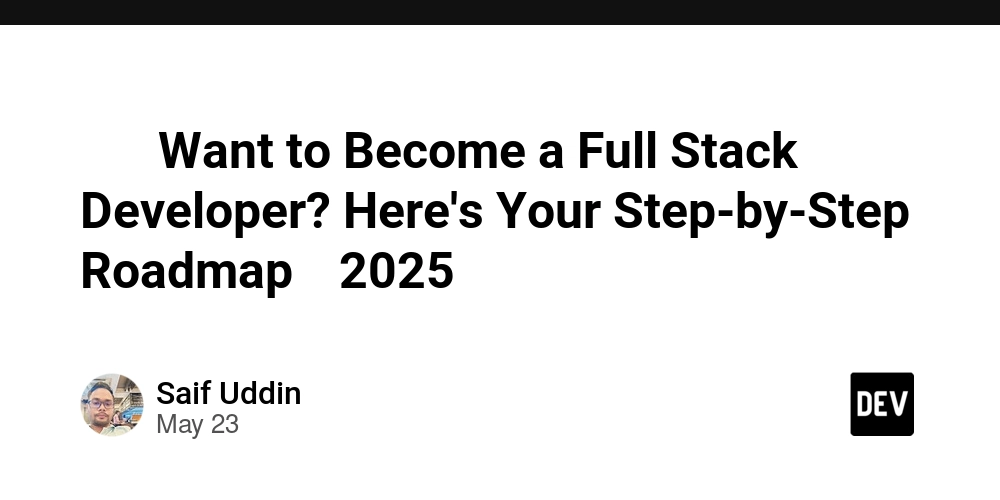🧑💻 Want to Become a Full Stack Developer? Here’s Your Step-by-Step Roadmap 🚀 2025
In today’s fast-evolving tech industry, Full Stack Developers are among the most in-demand professionals. But what exactly does a Full Stack Developer do? And how can you become one?
In this blog post, we’ll break down the role, the skills required, and a step-by-step roadmap to help you become a successful Full Stack Developer.
What is a Full Stack Developer?
A Full Stack Developer is a software engineer who can work on both the front-end and back-end of a web application. They handle everything from designing user interfaces to managing databases and server logic.
Key Responsibilities:
Front-End Development (Client-Side): Building interactive user interfaces using HTML, CSS, JavaScript, and frameworks like React, Angular, or Vue.js etc..
Back-End Development (Server-Side): Writing server logic, APIs, and database management using languages like PHP, Node.js, Python (Django/Flask), Ruby on Rails, or Java.
Database Management: Working with SQL (MySQL, PostgreSQL) or NoSQL (MongoDB) databases.
DevOps & Deployment: Understanding cloud services (AWS, Azure), version control (Git), and CI/CD pipelines.
How to Become a Full Stack Developer?
Becoming a Full Stack Developer requires mastering multiple technologies. Here’s a structured roadmap:
1. Learn the Basics of Web Development
- HTML & CSS: Structure and style web pages.
- JavaScript: The core language for front-end and back-end (Node.js).
- Responsive Design: Learn frameworks like Bootstrap or Tailwind CSS.
2. Master Front-End Development
- JavaScript Frameworks: React.js, Angular, or Vue.js.
- State Management: Redux, Context API (for React).
- APIs & HTTP Requests: Fetch, Axios, RESTful APIs.
3. Dive into Back-End Development
- Server-Side Programming:
- Node.js + Express.js (JavaScript)
- Python (Django/Flask)
- PHP (Laravel)
- Ruby on Rails
- Java (Spring Boot)
- Authentication & Security: JWT, OAuth, password hashing.
4. Work with Databases
- SQL Databases: PostgreSQL, MySQL.
- NoSQL Databases: MongoDB, Firebase.
- ORM/ODM Tools: Sequelize (SQL), Mongoose (MongoDB).
5. Understand Version Control & DevOps
- Git & GitHub: For collaboration and version control.
- Deployment: Learn about AWS, Heroku, Netlify, or Vercel.
- Docker & Kubernetes: Basics of containerization.
6. Build Real-World Projects
Apply your skills by building projects like:
✅ E-commerce Website (MERN Stack: MongoDB, Express, React, Node)
✅ Blog Platform (Django + React)
✅ Task Management App (Full Stack with Authentication)
7. Keep Learning & Stay Updated
The tech world evolves fast - follow blogs, take online courses, and contribute to open-source projects.
Final Thoughts
Becoming a Full Stack Developer takes time and dedication, but it’s a highly rewarding career path. Start with the fundamentals, build projects, and gradually expand your expertise in both front-end and back-end technologies.
Are you ready to start your Full Stack journey? 🚀 Let us know in the comments!

